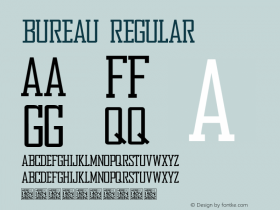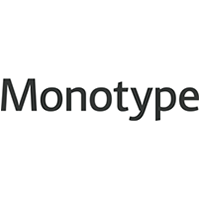
On the newsstand today there is no better example of elegant typographic restraint than Monocle. Created by Wallpaper* founder Tyler Brûlé in 2007, Monocle is a more sober, thinking man's report of high culture and design than his previous venture, with the addition of international affairs and business content. Hailed as a "global briefing" (don't call it a magazine) Monocle is immediately distinguished from Wallpaper* — indeed, nearly any other glossy mag — by its uncoated paper and minimal type palette. Other than the occassional decorative numeral, only Plantin and Helvetica appear on its pages.


Monocle is elegantly restrained in its use of color and type.




A case study in subtlety, the grid is broken only by tasteful illustration, bespoke initials, and judiciously placed circular labels and photo frames.
In an era of massive typeface superfamilies with double-digit weights and widths, all of which can be quite handy to the publication designer, Monocle art director Ken Leung presents a wide range of material with just a few styles of Plantin and Helvetica — and it works. Beautifully. Though it can sometimes come across as elitist, Monocle is a joy to read, a pleasing marriage of sophisticated writing and design. Simply opening the cardboard mailer each month to reveal the latest issue makes me feel affluent and urbane.
Resuscitating Plantin
I'm convinced that Monocle, now 2 years old, has almost single-handedly given new life to Plantin. The early 20th century relic is suddenly appearing in other magazines and brands after years of relative obscurity. It's not just a copycat trend. With its solemn tone, paper-conserving width, and large x-height, Plantin has definite merit as an alternative to Times and other magazine text faces. Monotype recently released Pro versions of the fonts with small caps, fractions, and both text and lining figures built in.
Though it's actually more narrow than it looks, Plantin is fairly wide by modern standards, saving less space than most contemporary serifs. Fortunately, a more condensed version, News Plantin, was developed for London's Observer newspaper. And for large settings there's the very narrow Plantin Headline. Brûlé's Wallpaper* once made use of a more whimsical Plantin, the Infant (formerly Schoolbook) version, with its primary forms of 'a', 'g', and 'y'. Finally, Plantin Titling adds subtle detail to what is otherwise a stout and sturdy face.

Update — Feb 17, 2009:Monocle Creative Director Richard Spencer Powell has graciously sent his thoughts about the magazine's typography, and the use of Plantin in particular:
From the outset it was our intention to make a serious magazine, with a nod to old journalistic values. Generous article lengths, commissioning both photographers and writers to report from the ground and not remotely, and to invest in local talent and bureaux. We've tried to innovate in print and go beyond usual newsstand expectations where we can.
With all of this in place and understood, some of the initial large creative decisions came very naturally. We knew we wanted a bookish, crisp white uncoated paper, and that a serif would be core to the look of the project. So Plantin was first choice, it has more character than most serifs, more charm, and holds ink very well and is hence extremely legible. The old style numerals and italics are really beautiful too, lowercase 'v' is a particular favourite. Plantin also possesses, to my mind at least, that rare quality that it seems to elevate a simple typed word into a logotype. Something that Helvetica has achieved for a long time.
Helvetica was paired with Plantin because I felt we needed something modern to sit along side the serif, and because they work well together without clashing. With Helvetica being quite neutral and our using it at small sizes only, it meant that the page felt well balanced, and the hierarchy worked each time.
In answer to the question of restraint within the pages of Monocle, I think two things. Firstly we wanted the words and images to be the focus, not tricky type treatments. I'm not a fan of flash graphics and at Monocle we always try and reduce the design down to a simple clean solution. I feel that the nature of the content dictates this too, it seems unnecessary to use a bullet riddled font to sell a story about conflict. I suppose I expect the reader to be interested enough in the image, title and content of the article, to read it on those merits alone. Secondly I think that if you want to build something to last it should have a confident permanent look. Something that doesn't reinvent itself every 6 months. Plus I have always found that restraint and a tight set of rules actually prompts more creative solutions. We always look at ways to use Plantin, not ways to replace it.








